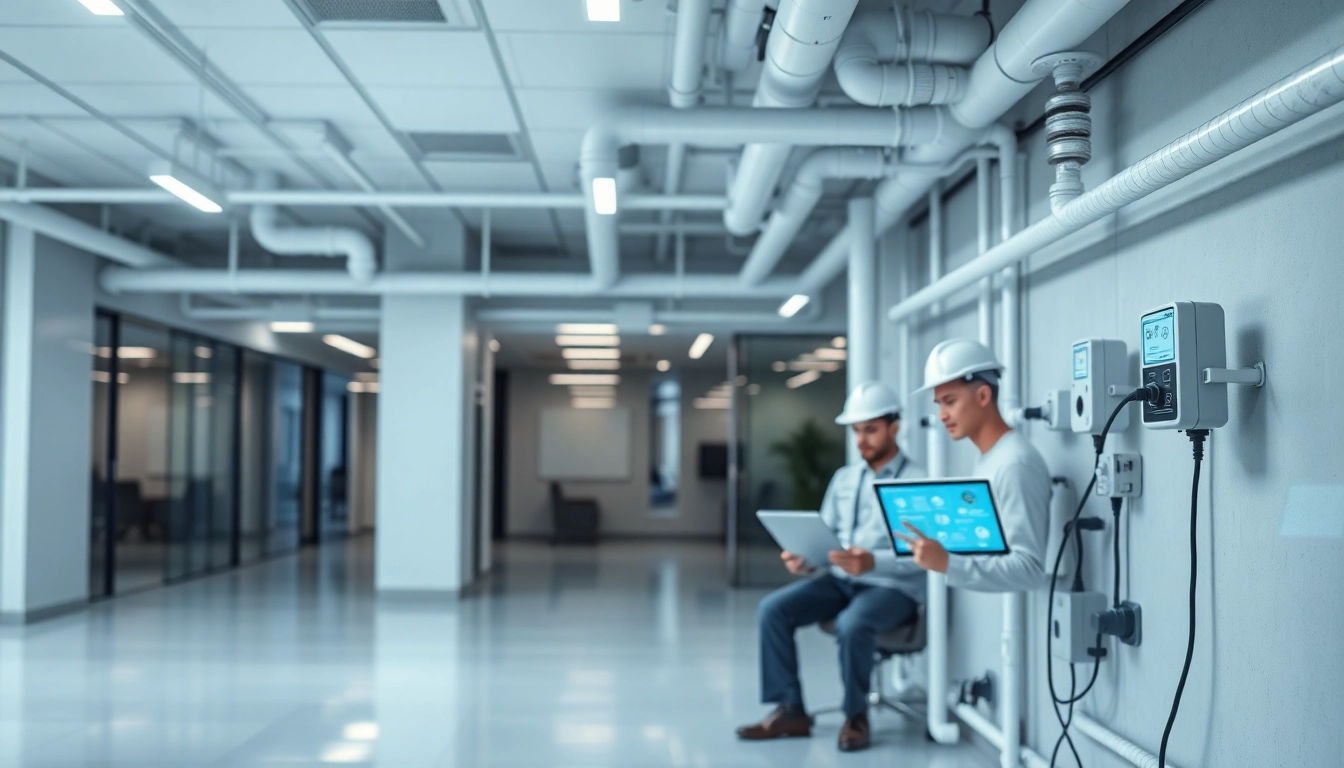Understanding Commercial Leak Detection
Commercial leak detection is a critical aspect of maintaining the infrastructure and operational efficiency of any business. The implications of undetected leaks can be severe, leading to extensive water damage, costly repairs, and interruptions in operations. Effective leak detection not only protects assets but also enhances the longevity of facilities. In this comprehensive guide, we will explore various aspects of commercial leak detection, from its importance to the technologies that facilitate it, ensuring you are well-equipped to manage leaks effectively. For more detailed insights, refer to Commercial Leak Detection.
What is Commercial Leak Detection?
Commercial leak detection involves the use of specialized tools and techniques to identify and locate water leaks within commercial properties. This process is essential in areas such as offices, warehouses, industrial facilities, and retail environments where water intrusion can lead to significant structural damage and financial loss. Commercial leak detection systems can range from simple manual inspections to advanced automated solutions designed to continuously monitor for leaks in real-time.
Importance of Commercial Leak Detection
The importance of commercial leak detection cannot be overstated. Early identification of leaks can save businesses millions by preventing widespread water damage, mold growth, and costly repairs. Additionally, prompt leak detection contributes to the conservation of water resources and helps businesses meet environmental regulations. Furthermore, a proactive approach to leak management fosters a more sustainable operational model, enhances reputation, and improves customer trust.
Common Types of Leaks in Commercial Settings
Leaks in commercial facilities can manifest in various forms, each presenting unique challenges:
- Piping Leaks: Corroded or damaged pipes, often hidden behind walls or under floors, can develop leaks that go unnoticed until significant damage occurs.
- Roof Leaks: Weather-related damage or wear and tear on roofs can lead to leaks, causing water to infiltrate the building structure.
- Fixture Leaks: Faucets, toilets, and other fixtures may develop faults leading to persistent dripping and wasting water.
- Slab Leaks: Leaks occurring in the pipes beneath the foundation of a building often lead to significant structural issues if not addressed promptly.
Key Technologies in Commercial Leak Detection
Innovative Detection Technologies Overview
The landscape of leak detection technology has evolved dramatically in recent years. Innovative solutions include acoustic leak detection, moisture sensors, and infrared thermography. Acoustic leak detection utilizes sensitive microphones to detect the sound of water escaping from pipes, while moisture sensors can be strategically placed to alert facility managers when leaks are occurring. Infrared thermography uses temperature differentials to identify areas where water infiltration is present by monitoring heat loss in walls and ceilings.
Wireless vs Wired Commercial Leak Detection Solutions
When implementing leak detection systems, organizations must decide between wireless and wired solutions. Wireless detection systems offer flexibility and ease of installation, allowing for quicker deployment without the need for extensive plumbing and electrical work. They can integrate with existing Wi-Fi networks to provide real-time monitoring and alerts. On the other hand, wired systems are often more reliable and may offer advanced features such as continuous power supply, though they might involve a higher initial investment and installation complexity.
Utilizing Smart Technology in Commercial Leak Detection
The integration of smart technology into leak detection systems allows for enhanced monitoring and management capabilities. Smart sensors can communicate with building management systems, providing event-triggered alerts and automating responses. For instance, when a leak is detected, the system can automatically shut off the water supply to minimize damage. This integration not only contributes to operational efficiency but can also lead to reduced insurance premiums.
Implementing Commercial Leak Detection Systems
Step-by-Step Guide to Installation
Successfully implementing a leak detection system involves several critical steps:
- Assessment of Needs: Begin by assessing the specific needs of your facility, including high-risk areas and existing plumbing layouts.
- Select System Type: Choose between wireless and wired systems based on your assessment. Consider factors such as ease of installation, budget, and maintenance.
- Installation: Follow manufacturer specifications for installation to ensure optimal performance. Utilize qualified personnel to handle electrical and plumbing connections safely.
- Testing: Conduct thorough testing to ensure all sensors and alarms function correctly before going live.
- Training: Provide training for staff on how to respond to alerts and manage the detection system effectively.
Choosing the Right Commercial Leak Detection Equipment
When selecting leak detection equipment, consider the following criteria:
- Type of Technology: Assess if the equipment uses acoustic, infrared, or moisture detection technologies, and choose one that aligns with your needs.
- Scalability: Ensure the system can be expanded as your facility grows or your needs evolve.
- Integration Capabilities: Determine if the equipment can integrate with other building management or alarm systems for enhanced functionality.
- Reliability: Select trusted brands known for their durability and reliability in commercial environments.
Training Staff for Effective Leak Management
Equip your personnel with the knowledge and skills necessary for effective leak management. Training programs should include:
- Identification of potential leak sources within the facility.
- Understanding alarm systems and responding to detected leaks.
- Regular maintenance schedules for detectors and sensors.
- Best practices for documentation and reporting of leak incidents.
Common Challenges and Solutions in Commercial Leak Detection
Identifying Hidden Leakage Points
One of the primary challenges in commercial leak detection is locating hidden leaks. Employing advanced technologies, such as thermal imaging and acoustic leak detection, can simplify this process. Additionally, regular inspections can help identify vulnerable areas where leaks are more likely to occur.
Maintenance of Leak Detection Systems
Maintaining leak detection systems is essential for their effectiveness. Create a routine maintenance checklist that includes:
- Regular testing of all sensors and alarms to ensure optimal functionality.
- Calibration of equipment to maintain accuracy over time.
- Replacing batteries or components as recommended by the manufacturer.
Addressing Cost Concerns with Commercial Leak Detection
Understanding the initial investment versus long-term savings is crucial when assessing cost concerns. Although high-quality leak detection systems may seem expensive upfront, the potential savings from avoiding water damage and disruption in operations can far outweigh these costs. Conduct a cost-benefit analysis to present the value of leak detection to stakeholders and justify the investment.
Measuring Success in Commercial Leak Detection
Key Performance Indicators for Monitoring
To gauge the effectiveness of your leak detection system, monitor key performance indicators (KPIs) such as:
- Response time to detected leaks
- Reduction in water damage incidents
- Maintenance costs of the leak detection system
- Number of leaks detected before they caused damage
Conducting Regular Evaluations and Assessments
Regular evaluations of your leak detection system should be conducted to ensure continued effectiveness and efficiency. Schedule periodic assessments to review system performance against established KPIs and adjust strategies as necessary. This includes analyzing incident reports and assessing staff readiness and training effectiveness.
Building a Culture of Prevention in Your Commercial Space
Creating a culture of prevention involves fostering awareness amongst staff about the importance of leak detection. Encourage open communication regarding leaks and promote a proactive mindset where employees feel empowered to report concerns and suggest improvements. Incorporating leak detection awareness into staff onboarding and regular training sessions can reinforce this culture.



